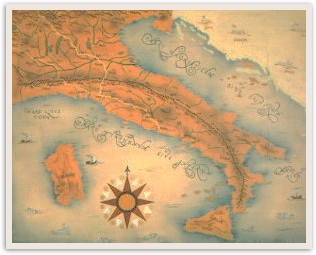





There was a moment in history when Europe was formed: “it was built”-said Goethe- “along the Francigena route, along the Camino de Santiago, along the great pilgrimage ways”.


The destinations were Rome, Santiago de Compostela, St. Michele Gargano, Volto Santo of Lucca, Vienne and others.
Along those roads wonder Churches arose, almost always made of white marble or limestone. This was the case also in Lunigiana where often during the first period of the romanic architecture, walls are made of white stone. Here, in Lunigiana, the Camino de Santiago, the Francigena route and the Via del Volto Santo crossed, and Padanian and Tuscan influences met, leaving their traces in our roman Churches.

